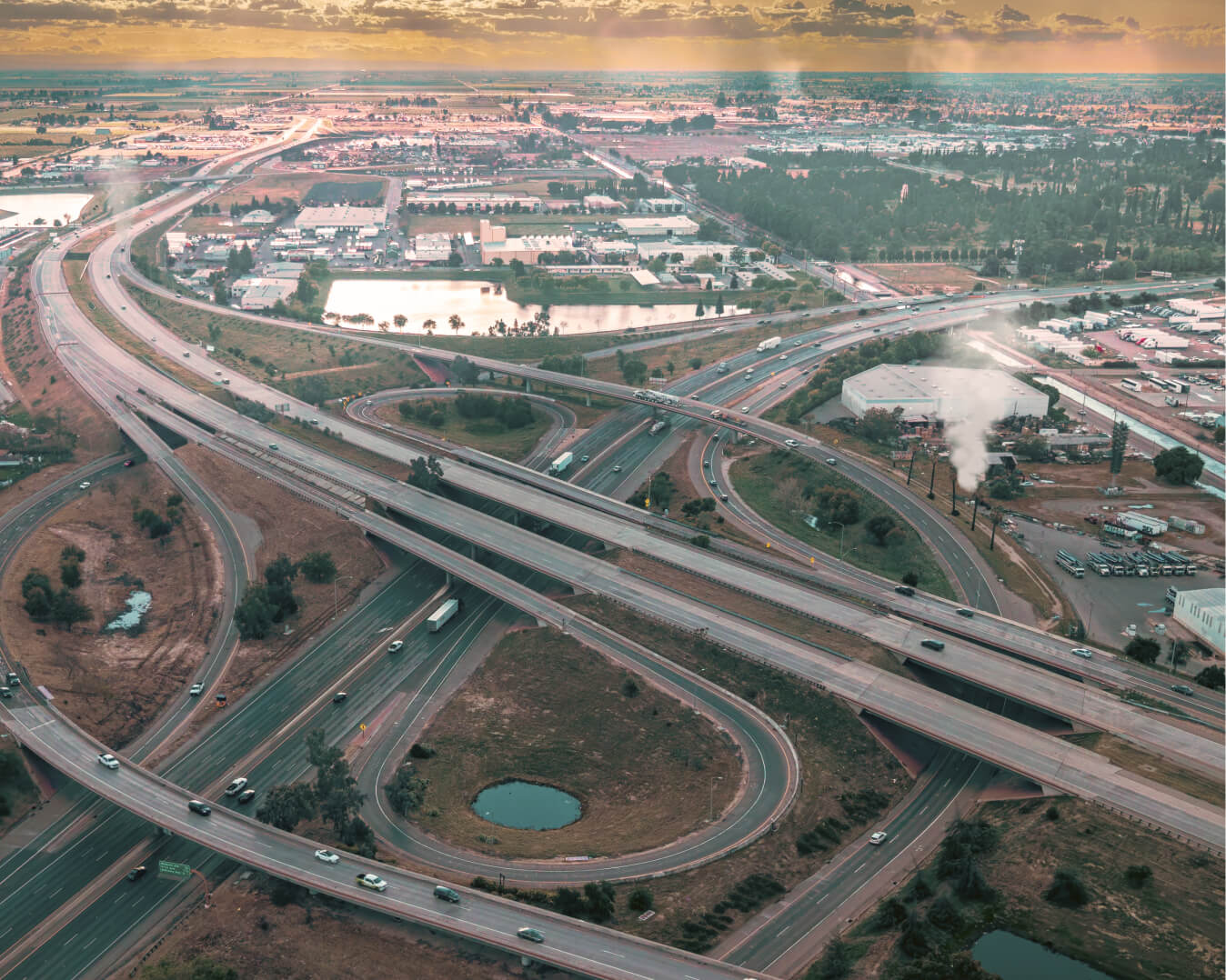Communities of Color Can’t Wait: Governor’s Cuts to California’s Climate Equity Programs Put the State and Our Neighborhoods at Risk

In the last few years, record-breaking extreme weather has become the norm in California. We’re barely in the second month of 2024 and Californians are already inundated by life threatening floods and mudslides from atmospheric rivers that have taken the lives of at least three people, washed away homes, and left hundreds of thousands without power.
As the impacts of climate change intensify, we face a crisis of worsening inequity. This is due to decades of inequitable policies and infrastructure investments that have left formerly redlined neighborhoods more vulnerable to climate change impacts, like flood risks and hotter temperatures, with less resources to mitigate them and build resilience.
Black, Latinx, indigenous communities, low-income, and immigrant and refugee communities have known this reality for decades. But because of the status quo of focusing investments in wealthier communities that tend to have more political capital and louder voices, they are often sidelined despite having greater needs. Building resilience in these underserved communities is critical to not only ensure they can withstand climate disasters and the impacts of over-pollution, it’s also the key to building a more healthy, resilient, and sustainable California in the long run.
California Can’t Address Climate Change Without Addressing Inequity
In recent years, lawmakers have finally started to address climate inequity and allocated billions in federal and state dollars to build capacity and climate resilience in formerly redlined communities. At the same time, we’re seeing a troubling trend where these long-term climate equity solutions are the first to go when the economic tides turn.
With the news of another historic budget deficit, the state is once again backing away from its commitment to address the inequitable impacts of climate change. Priority programs like Transformative Climate Communities (TCC) and Regional Climate Collaboratives (RCC) among other climate equity initiatives have been slashed from the budget for two years in a row with a tenuous promise for more funding in the future.
The problem with this inconsistent approach to climate equity is, while the ways communities experience the impacts of climate change vary depending on who you are and where you live, climate change remains a global issue. If we don’t take decisive action to slow the progression of climate change, everyone will suffer the consequences. Climate solutions must prioritize those most impacted and most under-resourced if we’re going to meet our aggressive climate goals.
We need our state leaders to step up NOW and make good on their commitments made to critical climate equity programs to stop this crisis and protect the state’s most vulnerable communities. Our communities are under water and the problem is only getting worse.
Frontline Communities Need Ongoing Investments for Community Resilience
In the last decade, the state established and invested in two key programs driven by advocates to help formerly redlined communities build capacity and resilience to climate change: the Regional Climate Collaboratives program and the Transformative Climate Communities program. However, these proven models will only continue to work if we commit to ongoing investments in their long-term visions for success: which the State has failed to do two years in a row.
- The Programs: RCC builds community capacity in California’s most under-resourced to access public funding for climate projects, while TCC funds CA disadvantaged communities to lead coordinated climate projects like rooftop solar, affordable housing near clean public transit, and tree planting to reduce greenhouse gasses while promoting multiple community resilience benefits. Together, the two programs provide California with a pipeline approach, starting from increased capacity building and community cohesion through RCC, and leading to communities having the most effective tools to access climate investments like TCC — all across the state from rural and urban, incorporated and unincorporated, to north and south, east and west.
- The Impact: In its first round of funding, RCC has funded 6 climate collaboratives and dozens of neighborhood and climate resilience and action plans amongst other activities. And across the first five rounds of funding, TCC has yielded an impressive array of outcomes, ranging from 395 affordable housing units built, to 18,305 trees planted in communities across the state including Oakland, Stockton, Sacramento, Bakersfield, Ontario, and San Diego.
State Breaks Promises to Invest in Climate Equity Programs

Both RCC and TCC are in high demand and regularly oversubscribed; yet the Governor and Legislature cut funding for TCC in the 2023 budget, and the Governor cut funding for RCC in the recent 2024 budget proposal.
In fact, a trend we continue to see is the Governor claiming to maintain the original historic California Climate Commitment of $54 billion climate budget from 2021 at a high amount (89% in 2024) even during deficit years. But in reality the Administration is continuing to cut or delay funding for programs into “out years”, as a way to make it appear as though the overall funding amount is preserved. The major concern is that none of that funding is actually guaranteed and essentially functions as “IOUs” for communities seeking to access that funding. And those delays can quickly turn into cuts
We saw this firsthand with both TCC and RCC.
Let’s break it down:
For TCC, the state in its California Climate Commitment allocated a total of $420 million across 3 years – a very commendable amount of funding. What actually happened? Of the $420 million, almost 50% was cut during that three year period. Only $215 million actually went out the door.
Removing funding for TCC cuts off the circulation to one of our nation’s most effective and equitable models for generating neighborhood-level climate solutions.

And for RCC, the state committed a total of $20 million across 2 years – a great start to funding a new program championed by advocates.
What actually happened? 50% of the funding was cut. This cut was especially egregious. In the January 2024 proposal, the Governor cut $10 million that was committed in 2022. However, the agency administering the grant was planning on announcing awardees for the $10 million this February, meaning that communities had been counting on that funding for the past two years and had already spent time, energy and resources applying for the grants. The Governor cut funding for a program building capacity in our most under-resourced communities a month before the awardees would’ve been notified.
Leadership Counsel for Justice and Accountability, an environmental justice organization based in the San Joaquin Valley and Eastern Coachella Valley had applied for RCC grant funding: “We were extremely disappointed to see the RCC funding removed from the budget in yet another cut to climate equity programs in California. Vulnerable regions like unincorporated communities in the San Joaquin Valley need capacity building programs like RCC. Eliminating this funding impacts the ability of local community leaders to take swift action on climate, build critical regional networks, and leverage local, state, and federal resources to implement climate resilience, adaptation, and mitigation strategies,” shared Olivia Seideman, their Climate Policy Coordinator.
The funding cuts have caused severe disruptions to communities who have been planning for these grants and counting on those dollars through these programs to support community-led climate initiatives and build their community climate resilience. And make no mistake, we support the state’s nearly $50 billion for other climate priorities, but completely eliminating funding for California’s leading climate equity programs is a devastating blow to communities that are already suffering because of the cycles of disinvestment. How are they supposed to build their climate resilience when this administration keeps pulling the plug on the programs we know work?
Looking Ahead
Across the state, communities are working hard to prepare for climate disasters and stay safe. But they cannot sustain this on their own. As climate change worsens, California must double down on climate equity investments, not strip them away.
California has a choice: invest in equity-centered programs that are proven to build community resilience and maintain California’s leadership as a climate equity champion, or backslide on its commitment to equity and put the state’s climate progress in jeopardy. Our most innovative and equitable programs are on the line; we must fight to keep them alive to support communities with the greatest needs in our state. We hope you will join our advocacy to ensure that California’s state budget is equitable and protects California’s frontline communities. If you would like to join our advocacy as a supporter, please fill out this short google form.




